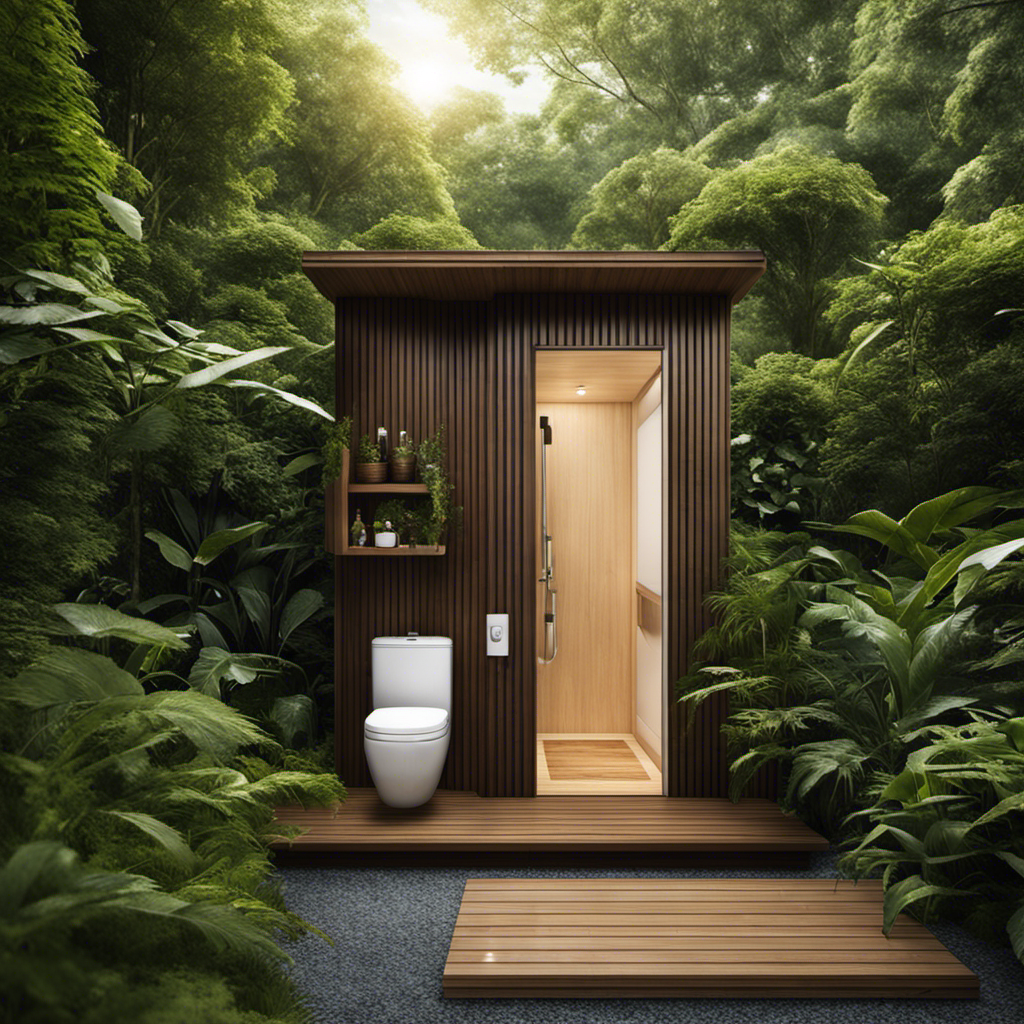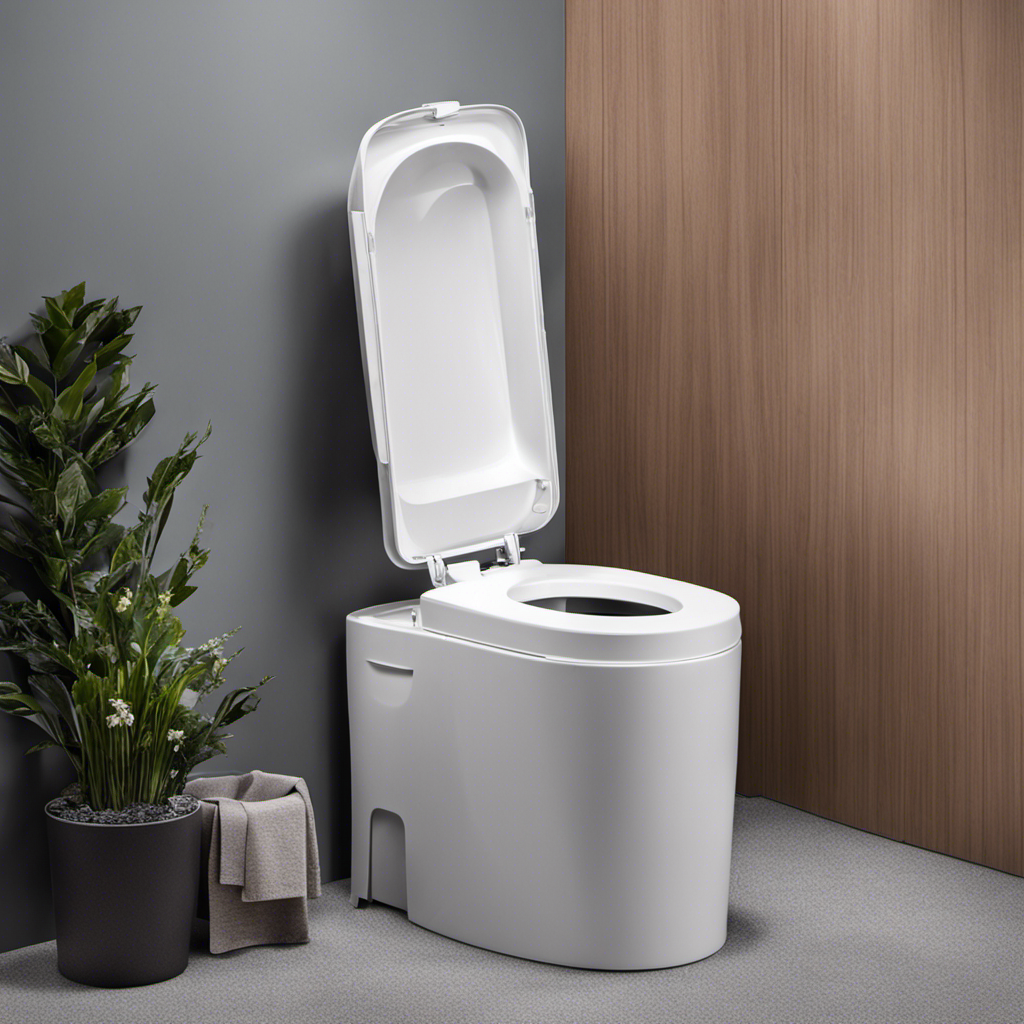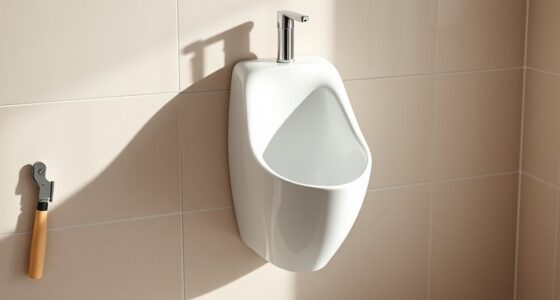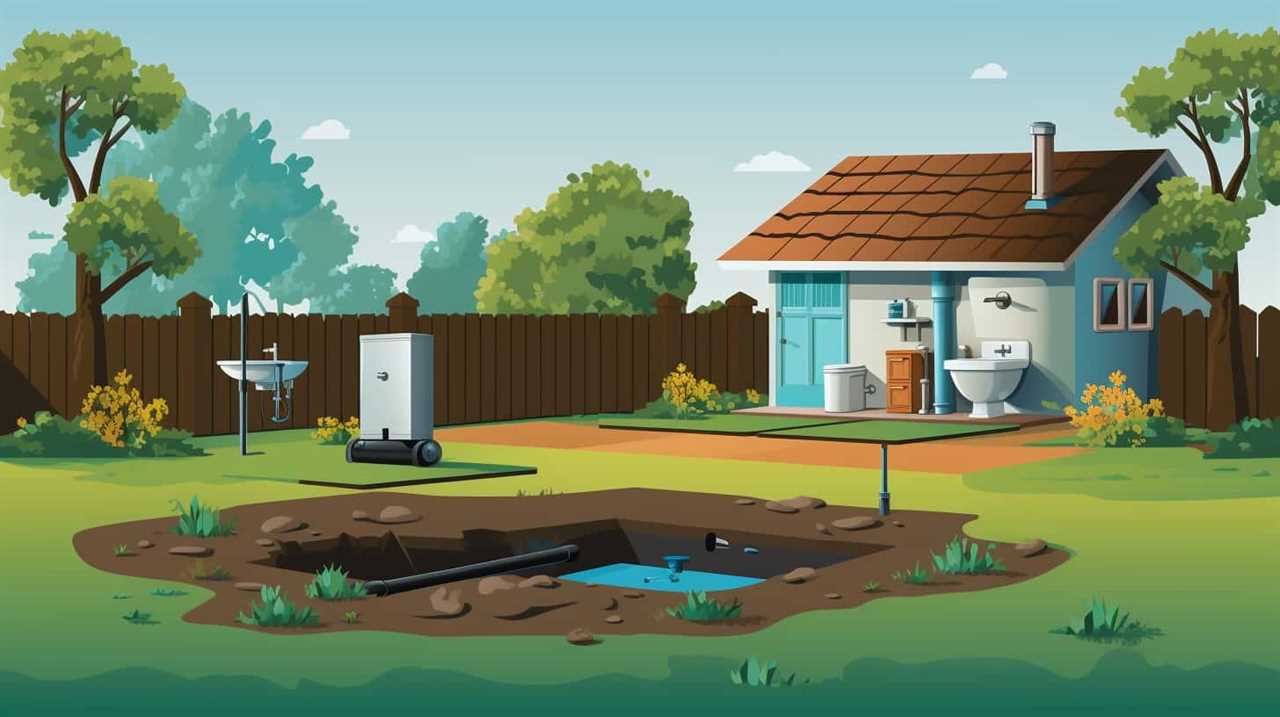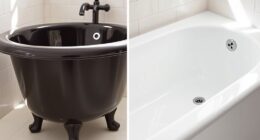I thought I knew everything there was to know about toilets, until I discovered the world of composting toilets.
Imagine, a toilet that not only saves water but also helps the environment by turning waste into nutrient-rich compost.
In this article, I will guide you through the ins and outs of using a composting toilet. From understanding the basics to proper usage and maintenance, I’ll provide you with all the information you need to embrace this eco-friendly alternative.
So, let’s dive in and learn how to use a composting toilet effectively!
Key Takeaways
- Add organic bulking material after each use to aid decomposition.
- Maintain proper moisture levels by adding water as needed.
- Regularly turn the compost pile for aeration and decomposition.
- Follow manufacturer’s instructions for emptying and disposing of composted material.
Understanding the Basics
Understanding the basics of how to use a composting toilet is essential before getting started. Composting toilets offer numerous benefits, both for the environment and for individuals.
Firstly, they are a sustainable alternative to traditional flush toilets, as they help to conserve water. Composting toilets also reduce the need for chemical cleaners and sewage treatment facilities, making them a more environmentally friendly option.
Additionally, composting toilets can provide valuable compost for gardening and agricultural purposes. It’s important to note that there are different types of composting toilets available, including self-contained units and central systems.
Self-contained units are portable and can be used in remote areas, while central systems are more suitable for permanent installations. By understanding the basics of composting toilets and exploring alternative options, individuals can make informed choices that are both eco-friendly and practical.
Setting Up Your Composting Toilet
To get started with your composting toilet, you’ll need to first set it up in a suitable location. One of the great benefits of a composting toilet is its flexibility in terms of installation. You can place it in any area of your home or property, as long as it has proper ventilation and access to electricity if needed.
When choosing a spot, consider proximity to a bathroom or living area for convenience. Additionally, make sure the area is well-ventilated to allow for the aerobic decomposition process.
Regular maintenance is crucial for the proper functioning of a composting toilet. This includes adding bulking agents like sawdust or peat moss to aid in decomposition, monitoring moisture levels, and emptying the compost bin when full.
By properly setting up and maintaining your composting toilet, you can ensure its efficient operation and maximize its benefits.
Now, let’s move on to using the composting toilet properly.
Using the Composting Toilet Properly
When it comes to properly utilizing a composting toilet, it’s important to follow the recommended guidelines for maintenance and waste management. Composting toilets offer numerous benefits, including reducing water usage and producing nutrient-rich compost.
To use a composting toilet properly, start by adding a layer of organic bulking material, such as sawdust or coconut coir, after each use to aid in the decomposition process. It’s important to maintain the proper moisture level in the composting chamber by adding water as needed. Regularly turning the compost pile helps with aeration and decomposition.
Additionally, it’s crucial to follow the manufacturer’s instructions for emptying and disposing of the composted material. Alternatives to composting toilets include traditional flush toilets, which require large amounts of water, and incinerating toilets, which use energy to burn waste. However, composting toilets offer an eco-friendly solution that can save water and produce valuable compost for gardening.
Maintaining and Troubleshooting the Composting Toilet
If you’re experiencing any issues with your composting toilet, it’s important to regularly check the ventilation system to ensure proper airflow. A well-functioning ventilation system is crucial for eliminating composting toilet odor and maintaining a healthy environment. To help you troubleshoot and maintain your composting toilet, here are some common problems and their solutions:
| Problem | Possible Cause | Solution |
|---|---|---|
| Odor | Inadequate ventilation or improper waste disposal | Check and clean ventilation pipes. Adjust airflow if needed. Properly dispose of waste to prevent odor buildup. |
| Excessive moisture | High humidity or improper composting | Ensure proper ventilation and maintain a balanced carbon-to-nitrogen ratio in the compost. Adjust ventilation or add more bulking agents if necessary. |
| Slow decomposition | Incorrect composting conditions or lack of bulking agents | Monitor temperature and moisture levels. Add bulking agents like sawdust or coconut coir to aid decomposition. |
Eco-friendly Tips and Best Practices
One way you can adopt more eco-friendly practices is by reducing your water consumption in the bathroom.
Installing a composting toilet is a great way to achieve this. Composting toilets are designed to break down human waste into compost, which can then be used as a nutrient-rich fertilizer for plants.
Not only do they save water by eliminating the need for flushing, but they also provide several other benefits. For example, composting toilets help conserve water resources, reduce pollution from sewage treatment plants, and prevent contamination of groundwater.
Additionally, they can be installed in remote areas where traditional sewage systems are not feasible.
If you’re considering installing a composting toilet, make sure to research the different models available and choose one that suits your needs and budget.
Conclusion
In conclusion, using a composting toilet is not only an environmentally friendly choice, but also a practical and efficient one. Contrary to popular belief, composting toilets do not produce odors or pose health risks when used correctly. By following the proper setup and maintenance procedures, you can ensure a hassle-free experience.
While some may argue that composting toilets are complicated to use, I assure you that with a little knowledge and practice, they can become a seamless part of your sustainable lifestyle. So don’t let skepticism hold you back, embrace the composting toilet revolution today!
